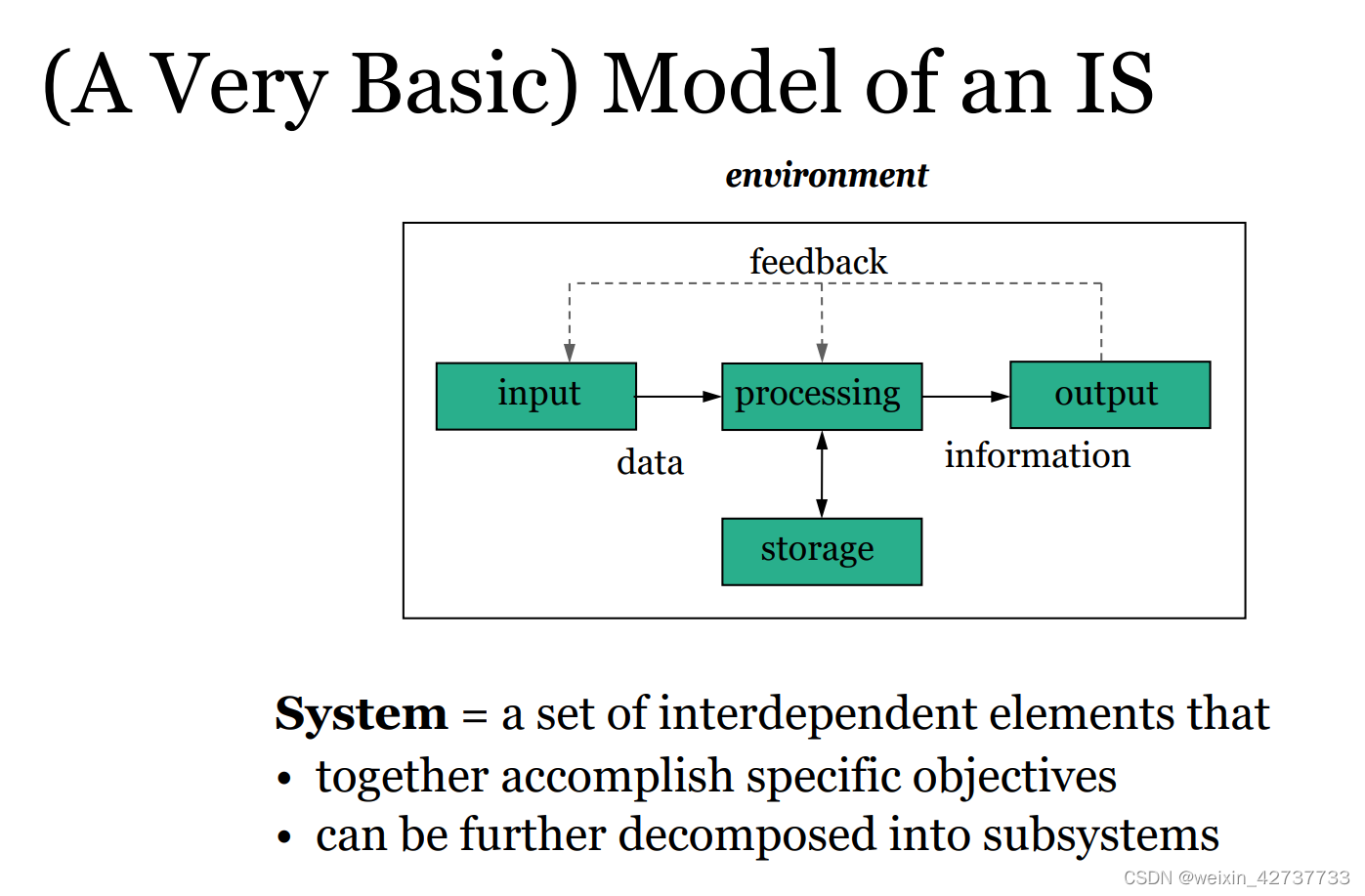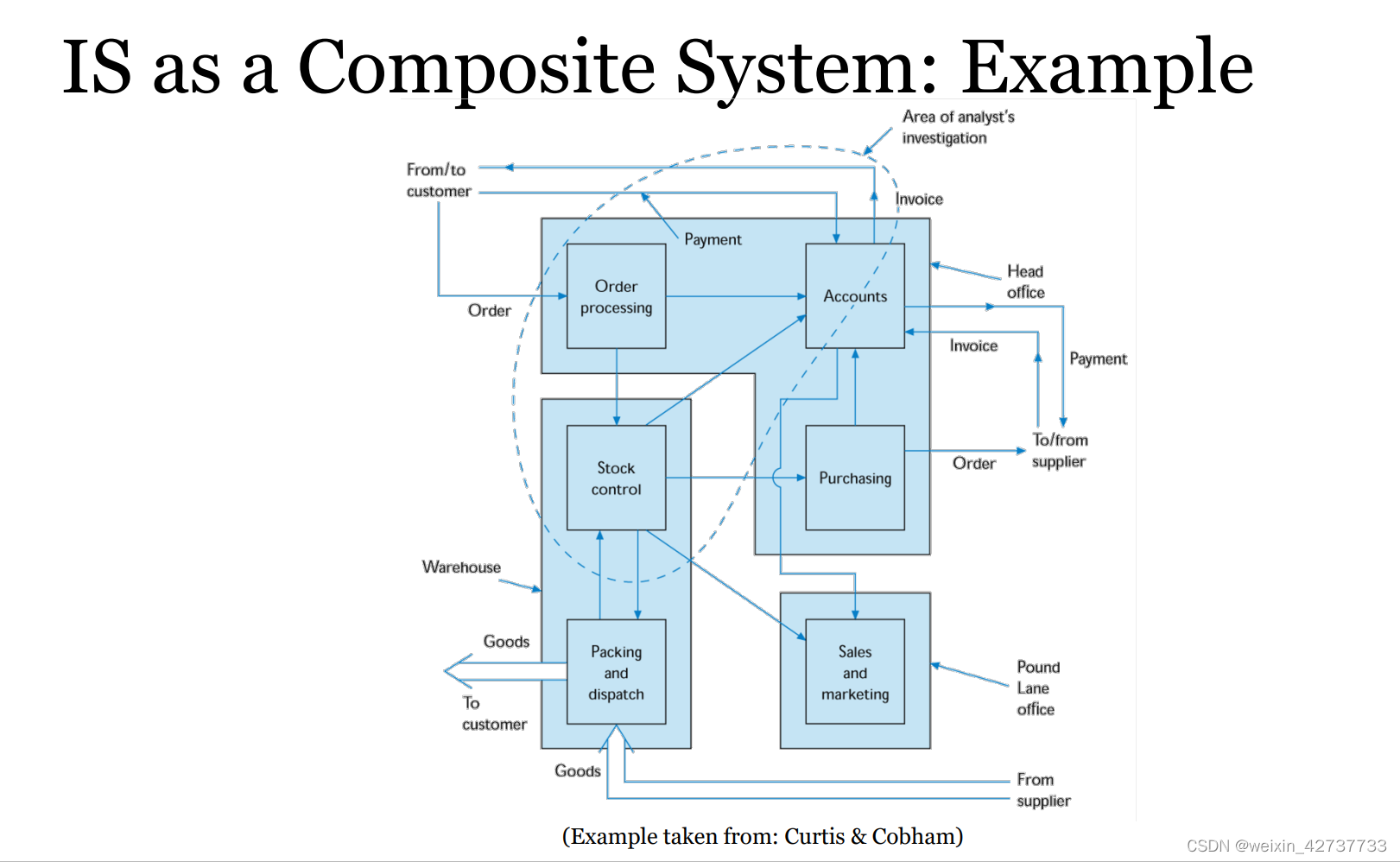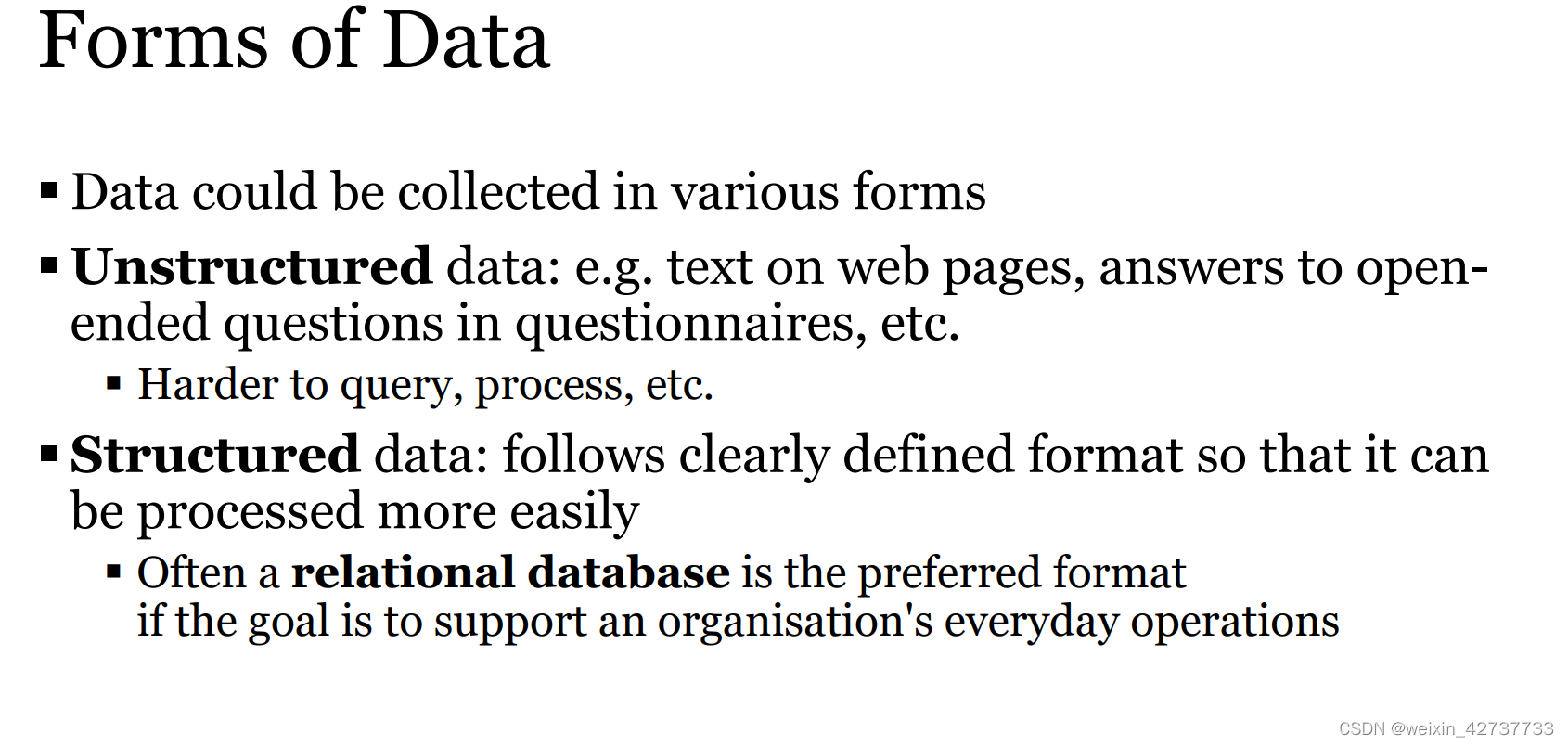Digital Technologies: Working Definition
- Digital technologies are electronic tools, systems, devices
and resources that generate, store or process computerised data
• They allow us to share information, communicate with others,
perform online transactions, monitor or control other devices,
etc.
• They help businesses coordinate (or even automate) business
processes, develop new business models, etc
Digital technologies are typically enabled by different types of
Information and Communication Technologies (ICTs):
- Computer hardware (e.g. mainframe, desktop computers, tablets,
smartphones, etc.) - Computer software (e.g. an operating system, a piece of accounting
software, a mobile app, etc.) - Telecommunications facilities and networks (e.g. router, company
LAN, the Internet, etc.
Information System: Example Definitions
- “A set of interrelated components that collect (or retrieve), process, store,
and distribute information to support decision making and control in an
organisation.” (Laudon & Laudon) - “Any organised combination of people, hardware, software,
communications networks, and data resources that collects, transforms,
and disseminates information in an organisation.” (O’Brien) - “A group of interrelated components that work collectively to carry out
input, processing, output, storage and control actions in order to convert
data into information products that can be used to support forecasting,
planning, control, coordination, decision making and operational activities
in an organisation.” (Bocij et al)
Data versus Information
- Data: raw observations or records of basic facts and events
(such as business transactions), expressed either quantitatively
or qualitatively - Information: data processed in order to be meaningful to
human beings and their decision making




Simple Types of Data Processing
| Type of process | Example |
|---|---|
| Classification | Transaction data may be classified as invoice data, payment data, order data |
| Rearranging/sorting | Data on employees may be ordered according to ascending employee number |
| Summarising/aggregating | Data on employees may be ordered according to ascending employee number |
| Performing calculations | Data on the total hours worked by an employee may be multiplied by the hourly wage rates to arrive at a gross wage |
| Selection | Total yearly turnover data on customers may be used to select high-spending customers for special treatment by sales personnel |
Information quality dimension
- Data/information quality may vary
- Wang and Strong (1996) distinguish between four quality
dimensions- Intrinsic quality: accuracy, completeness, consistency, etc.
- Contextual quality: timeliness, relevancy, etc.
- Representational quality: understandability, conciseness, right
format, etc. - Accessibility quality: accessibility, security, etc.
Exercise: Analysing an Example IS
Prior to the start of each semester, lecture timetables are produced for the University, which can then be accessed by staff and students. Think about how this information system and its various components might be designed. A timetable has a different data structure than say a list of sales transactions (where a basic entry might be a product sold at a particular shop, at a particular time, etc.). Once finalised, personalised timetable information is provided to different groups of users.
- What are some of the examples of ‘data’ and ‘information’ in the timetabling system?
- What constitutes a basic entry or ‘slot’ in a timetable?
- Do you suspect this system is chiefly managed centrally or is distributed across the University? Why
- Who are the end users? How might they have different roles
- Can you think of any timetabling constraints that must be met and what data this requires?
What about Knowledge?
From Data to Knowledge
Information vs Knowledge: Example
- We learned that information system essentially take raw data and process it into information
- Now imagine your car breaks down…
- Temperature gauge points to the red zone
- = Information
- Without some knowledge about cars still do not know how to fix
the problem though
Example Definition of Knowledge
- The European Guide to Best Practice in Knowledge
Management defines knowledge as: - “The combination of data and information to which is added expert opinion, skills and experience to result in a valuable asset which can be used to make decisions. It is the essential factor in adding meaning to information. Knowledge may be explicit and/or tacit, individual and/or collective.” (Mekhilef et al., 2003
- Think of your previous work experience,
your hobbies or your experience so far
here at the University: What would you
consider examples of knowledge (as
opposed to information) in those contexts?
Explicit vs Tacit Knowledge
-
Explicit knowledge
- Has been or can easily be articulated, codified, made public
- Codified in e.g. documents, reports, charts, papers, procedures
- Example: set of rules for calculating taxes
-
Tacit knowledge
- Exists within a person’s (or collective’s?) mind, is private and unique
- Often unconscious, based on personal experiences, individual learning, special know-how
- Difficult to extract and codify
- Example: experience of investment manager in trading stocks

What is Knowledge Management?
- Knowledge management is concerned with the management
of the knowledge assets of an organisation - Knowledge management encompasses:
- Knowledge creation
- Knowledge codification and storage
- Knowledge transfer
Digital business
Changing Role of Digital Technologies
Whereas previously digital technologies were often seen as
sources of efficiency and productivity, now “digital technology,
for the first time, moves into the forefront, into the heart of
what the business is doing and how it generates revenue, seizes
competitive advantage and produces value” (Gartner)
https://www.information-age.com/gartner-identifies-six-key-steps-build-successful-digital-business-123458018
Living in a Digital Economy
- Digital businesses such as Apple, Microsoft, Alphabet (Google),
Amazon are among the top 5 most valuable companies
(according to market cap)
https://companiesmarketcap.com/top-companies-by-pe-ratio/ - Elsewhere too though, digital transformation is changing how
businesses are run, the products or services they provide, etc.
Digital Business: Example Definition
- Gartner defines digital business as the creation of new business designs by blurring the digital and physical worlds
- “New business designs” – new kinds of products and services, business models, industry models, etc.
- “Blurring the digital and physical worlds” – physical products becoming smart and connected, software companies designing self-driving cars, manufacturers collecting product performance data to run remote services and upgrades, etc.
- Technologies no longer just enabling doing the same things
faster and cheaper but changing the very way we conduct
business
Waves of Business Digitisation
- This process of ‘digitisation’ to some originated in the late
1990s, when companies started to use the web to sell online –
subsequent rise of e-commerce - In the 2000s, the web continued to transform business
- Web 2.0, social media, etc.: Users went from being content consumers to content creators
- Online advertising became the ‘lifeblood’ of this new ecosystem of advertisers, publishers/platforms and users
- Products themselves started becoming digital (e.g. music downloads and later streaming services, e-books, etc.)
Waves of Business Digitisation (cont’d)
- In the 2010s, we have seen…
- Digital channels extending to mobile and everyday devices
- The digital footprints we leave behind being analysed in ever more depth so as to drive business decisions or create new opportunities (cf. analytics & big data)
- New digital entrants such as Uber, Airbnb, etc. disrupting existing sectors
- More recently
- COVID-19 pandemic seems to have further accelerated digital transformation
- Practices and business models have come under increased scrutiny
Lecture Conclusions
- In this lecture, we defined and discussed the basic concepts of:
- Digital technologies
- Data vs information vs knowledge
- Information systems (IS) and their components
- Digital business






















 被折叠的 条评论
为什么被折叠?
被折叠的 条评论
为什么被折叠?








